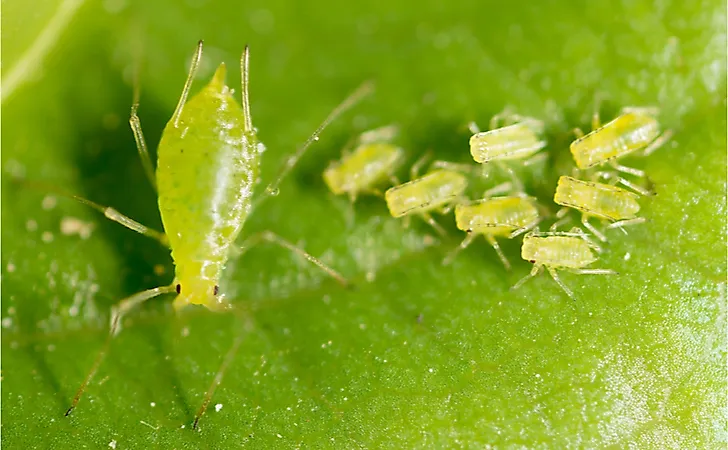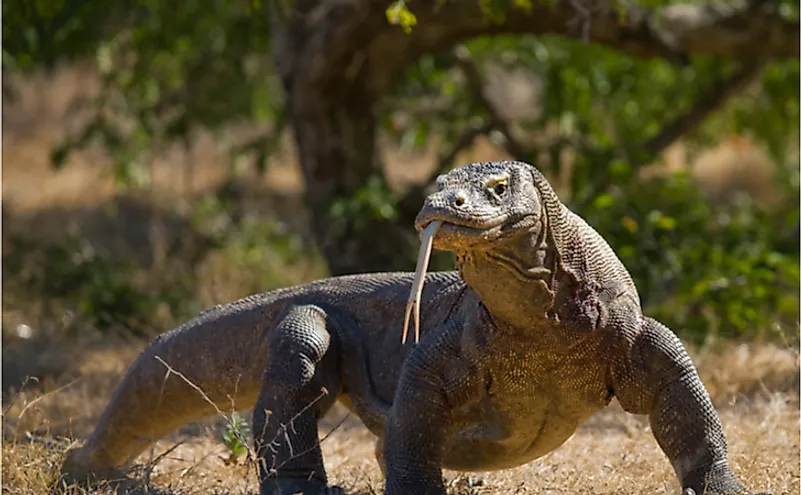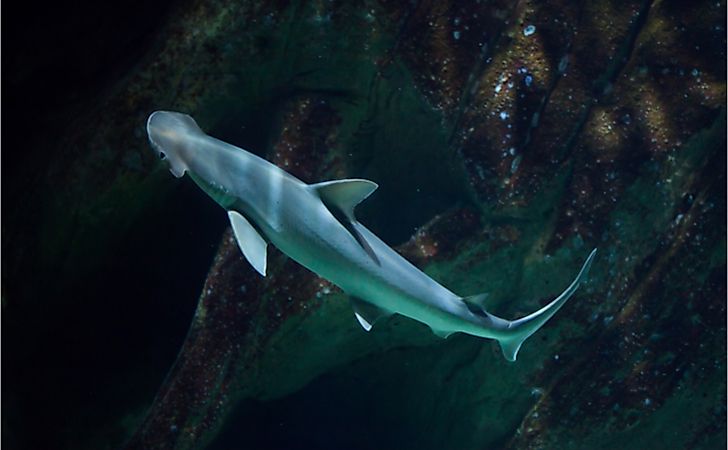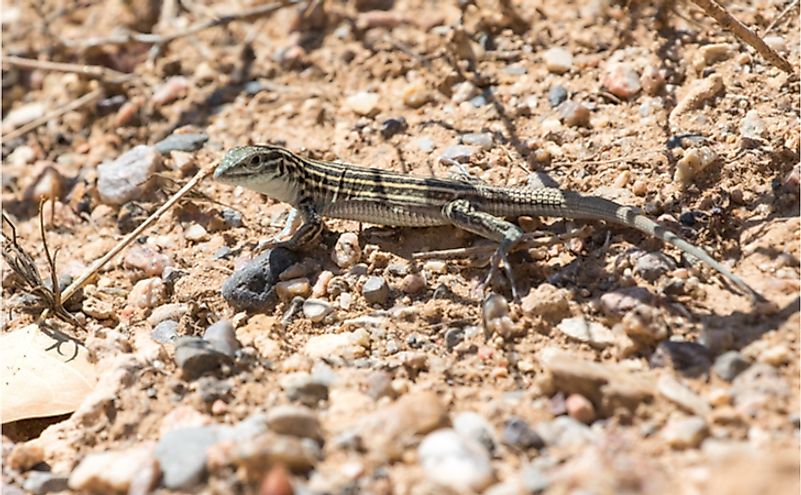10 Animals That Exhibit Parthenogenesis

Parthenogenesis is a natural reproduction process in lower plants and various animals. Parthenogenesis involves the development of embryos from unfertilized eggs. Parthenogenesis in animals can be apomictic or automictic. Apomictic parthenogenesis is the process by which mature eggs are produced via mitotic oogenesis while with automictic parthenogenesis, the egg cells undergo meiosis. Organisms produced through the former process are usually full clones of their mothers while the ones produced through the latter method are not. Some of the animals that exhibit parthenogenesis include:
Komodo Dragon

Komodo dragons are the largest living lizard species that can attain a maximum length of about 10ft and weigh approximately 150pounds. Komodo dragons are found in the Islands of Gili Motang, Flores, Rinca, and Komodo in Indonesia. Komodo dragons are sexual organisms that can also reproduce parthenogenetically. A komodo dragon known as Sungai laid eggs in 2005 at the London Zoo after being separated from male komodo dragons for over 2 years. Initially, scientists assumed that she had stored sperm which she had received from males, but another Komodo dragon, known as Flora, laid 11eggs at Chester Zoo in 2006. 7 out of the 11 unfertilized eggs hatched. Scientists from the University of Liverpool performed a genetic test on 3 of Flora’s eggs and determined that her eggs were not fertilized. Thus, Komodo dragons can reproduce via parthenogenesis when placed in an isolated habitat.
Learn some more fascinating facts about these gigantic lizards in this article here.
Aphids
An aphid is a minute sap-sucking insect that belongs to the superfamily Aphidoidea. Aphids can reproduce both sexually and asexually. Often, in the simplest reproductive strategy, the aphid alternates the two methods of reproduction on a single host all year round. In other cases, aphids may reproduce solely by parthenogenesis. Hosts might also be changed during its life-cycle.
Blacktip Sharks
Blacktip sharks are requiem shark species that belong to the family Carcharhinidae. Blacktip sharks are quite common in the coastal subtropical and tropical waters on the planet. Blacktip sharks can reproduce both sexually and asexually. A 9-year-old female blacktip was found to be pregnant in 2007 at the Virginia-Aquarium and Marine-Science Center despite never being mated by any male. Genetic analysis confirmed that it had reproduced through parthenogenesis.
Bonnethead Shark

Bonnethead sharks belong to the Sphyrnidae family. Bonnethead sharks are the only omnivorous shark on the planet which can be found on the American coast. Its habitat ranges from Ecuador to California and from the Mexican Gulf to New England. Bonnethead sharks prefer warm water above 21°C. Therefore, they can be found near the equator in winter and the Mexican Gulf during summer. A bonnethead shark reproduced parthenogenetically in Nebraska at the Henry-Doorly Zoo. DNA analysis confirmed that the pup was produced via parthenogenesis in 2007.
Epiperipatus Imthurni
Epiperipatus imthurni is a velvet worm species that belongs to the Peripatidae family. The Epiperipatus imthurni can be found in Trinidad and Guyana. No male Epiperipatus imthurni species have ever been recorded. The females from Trinidad reproduce parthenogenetically. Epiperipatus imthurni is the only velvet worm species that reproduce through parthenogenesis.
Triaeris Stenaspis
Triaeris stenaspis is a spider species belonging to the Oonopidae family. Triaeris stenaspis can be found in the subtropical and tropical parts of the world including Australia, Madagascar, Argentina, the United States, and various isolated islands like Cook, Marquesas, Hawaii, and the Galapagos Islands. The Triaeris stenaspis is believed to be parthenogenetic since no male species has ever been found. Parthenogenesis has been proven in various Triaeris stenaspis species that were kept in laboratory-conditions. The spiders were reared since they were hatched until they died. All the spiders were female, and they laid fertile eggs which hatched into female offspring. Another spider species that is believed to be parthenogenetic is the Heteroonops spinimanus.
Brahminy Blind Snake
Brahminy blind snake, also known as Indotyphlops braminus, is a non-poisonous blind snake that is native to Asia and Africa. Brahminy blind snakes have been introduced in other parts of the world like Oceania, the Americas, and Australia. Brahminy blind snakes are fossorial creatures that resemble earthworms. These blind snakes are parthenogenetic, and so far all the specimens collected are females. These snakes can lay eggs or give birth to female offspring that are genetically identical.
Indo-Pacific Gecko
Indo-Pacific geckos, also known as fox geckos, is a species of geckos that can be found in Australia, Southeast Asia, and the Philippines. They are seen as dark brown or gray lizards with a pale-translucent color at night and some light markings during the day. Indo-Pacific geckos are parthenogenic animals. They are all females that lay eggs that hatch without being fertilized by a male.
New Mexico Whiptail

New Mexico whiptails are indigenous to Chihuahua (Mexico), Arizona, and New Mexico. New Mexico whiptail is one of the numerous lizards which can reproduce via parthenogenesis. Parthenogenesis has made it possible for this all-female lizard population to reproduce and grow into a unique species that can reproduce. Members of this species can also be created through the hybridization of the western whiptails and the little-striped whiptail.
Daphnia Pulex
Daphnia pulex is one of the most widespread water-flea species on the planet that can be found in a wide range of aquatic terrains. Daphnia pulex can be found in Australia, the Americas, and Europe. Daphnia pulex may appear reddish in hypereutrophic waters because of hemoglobin production while it may have little pigmentation in oligotrophic lakes. The head of the Daphnia pulex has 6 segments that are fused. Daphnia pulex can alternate between asexual and sexual reproduction.











